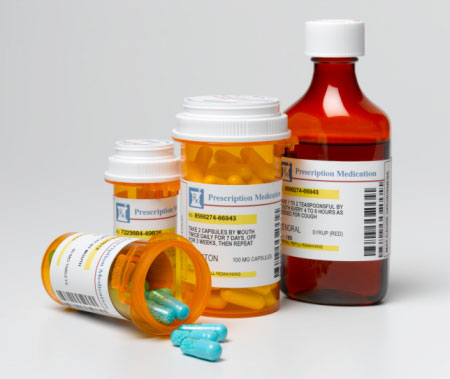 There are several ways prescription drugs may be making us all sicker—whether through illnesses brought on because these medicines deplete critical nutrients in our body, or because we’re unwittingly consuming pharmaceuticals in the municipal water we drink.
There are several ways prescription drugs may be making us all sicker—whether through illnesses brought on because these medicines deplete critical nutrients in our body, or because we’re unwittingly consuming pharmaceuticals in the municipal water we drink.
Drug-induced nutrient depletions
The number of dollars spent on prescribed medications in the US is at all time high. Seniors are expected to use an average of 38.5 different medications this year. The number of prescriptions written, drugs dispensed, and dollars spent are carefully recorded each year, particularly for those over the age of 65, but we’re doing a lousy job of quantifying the toll our prescription drug use has on our health because of nutrient depletions.
Now comes a study from a Netherlands university linking vitamin B12 deficiency with the use of metformin, a commonly-used diabetic medication. Given that 10% of Americans are now diagnosed as type II diabetic—with up to 40% being pre-diabetic—the number of cases of metformin-induced vitamin B12 deficiency may be immense. Vitamin B12 deficiency is commonly manifested by memory loss, though it is also linked to fatigue, anemia, nerve damage (including neuropathy), and other mental changes.
Coenzyme Q10—a substance found in our mitochondria—is an essential element in the creation of 90% of the human body’s energy. Statin drugs deplete CoQ10. While some cardiologists advise their patients on statin drugs to take supplemental CoQ10, most doctors are poorly educated on the subject, and consumers don’t know to ask what nutrients a particular drug will affect.
Ironically the first patent on statins included a patent combining them with supplemental CoQ10. So Merck, the manufacturer, knew about the damage to CoQ10 from statins but chose to say nothing and do nothing about it.
Dirty showers?
Another way our medications are making us sick is through our morning baths and showers. According to the American Chemical Society (ACS), showers and baths are sending hormones, antibiotics, and other medicines down the drain—and right into our drinking water.
It has long been known that toilets are a source of environmental pollution from active pharmaceutical ingredients (APIs) being excreted in urine and feces. But the ACS’s new study links bathing, showering, and laundering with API water pollution.
“These routes may be important for certain APIs found in medications that are applied topically. They include creams, lotions, ointments, gels, and skin patches,” according to Dr. Ilene Ruhoy, director of the Institute for Environmental Medicine at Touro University in Nevada. And topical APIs can have a greater impact on the environment than APIs released in feces and urine, because the latter have been broken down to some extent by the liver and kidneys.
“We need to be more aware of how our use of pharmaceuticals can have unwanted environmental effects,” Ruhoy continued.
Direct from the source
Perhaps worst of all, researchers have now found that the pharmaceuticals which have been turning up in streams and rivers may come directly from the drug plants that manufacture them. Researchers from the US Geological Survey (USGS) looked at the effluent from two New York state treatment plants serving drug manufacturers, and compared it to plants not receiving pharmaceutical waste.
Effluent samples from across the country showed evidence of the drugs, but concentrations were all very minor. By contrast, the New York plants that serve drugmakers released seven painkillers in massive concentrations—the highest was the muscle relaxant metaxalone.











